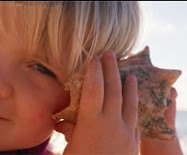ADHD and Neurotoxins . . . . Connecting the Dots
My friend, Marie, used to rouse her three teenage children on Saturday mornings and begin the day by requiring everyone to help clean the house. I admired her determination to consistently teach this responsibility to her kids.
Interestingly enough, because Marie was so consistent I found that a curious pattern emerged. Every Saturday afternoon, without fail, Marie's son exhibited hyperactive, "out of control" behavior after his cleaning chores.
Looking at the cause and effect of the son's behavior through my lens of awareness of how neurotoxic many cleaning chemicals are, I could see it would make sense that the son's central nervous system and brain could be reacting to these chemicals. Symptoms of neurotoxicity include lack of concentration, personality changes, depression, hyperactivity and the mimicking of psychiatric disorders.
Not being particularly "green," the cleaning products Sally bought for her kids to use were the standard store-bought fare readily available in supermarkets.
This brings to mind a couple of sad, but true, facts:
- Just because it is on the store shelf does not mean that it is safe.
products that kill 50% of lab animals through ingestion or inhalation can still receive the federal regulatory designation "non-toxic".
To name a few examples of neurotoxins found in such products:
- VOCs (furniture polish can contain VOCs)
- neurotoxic disinfectants
- petroleum distillates
- fragrances (scented products are notoriously neurotoxic)
- and waxes (VOCs again in the solvents)
"Each 10-fold increase in urinary concentration of organophosphate metabolites was associated with a 55 percent to 72 percent increase in the odds of ADHD," study author Maryse F. Bouchard, PhD, of the Department of Environmental and Occupational Health, University of Montreal, told Medscape Psychiatry.
Another example of subtle neurotoxic exposure children suffer through that most adults miss is to the solvents in markers in art class. When my daughter was in school, one year the math class was the period after art class, and she said that the kids were always "off the walls" in math class. What a tragedy, and one that could so easily be avoided if schools stopped allowing neurotoxic art materials to be used. How many kids thought they were bad at math when the culprit was the colored markers?
I've often wondered why the dots haven't been connected by most people between neurotoxic chemicals and ADHD-type behavior. After all, if a neurotoxic chemical is known to cause depression, for example, and that chemical is being used, why do so few people (and almost no psychiatrists) say, oh my gosh, let's remove the neurotoxin?
At least one thing parents can do is to remove neurotoxins from the home. Here is the 15 Point Hit List. These are quick and easy solutions:
- Yes to "green" dry cleaning using C02, no to dry cleaning with perchlorethelene (and NO hanging clothes in bedroom closets until they have first aired out -sans plastic dry cleaner bags- in another less "lived in" room. We use the garage unless it is boiling hot and in the summer we use the well ventilated mud room)
- Yes to vegetable-based Free and Clear detergents and cleaning products, no to cleaning products containing volatile organic chemicals (My company has great choices here).
- Yes to natural furniture polishes like those made by my company - or simple jojoba oil (a natural wax), no to furniture polish made of volatile organic chemicals.
- Yes to organic produce, no to highly processed foods.
- Yes to safe integrated pest management, no to synthetic pesticides (Request information for @ least two replacement products in this category).
- Yes to water-based markers, no to solvent-based markers.
- Yes to food with natural food coloring, no to food with FD&C dyes
- Yes to cedar and herbs for moths, no to moth balls.
- Yes to natural essential oils for fragrance, no to synthetic perfumes and fragrances (Again my company hits a home run in this category!)
- Yes to efficient heating systems, no to kerosene, open gas, or other systems that could leak carbon monoxide.
- Yes to educating yourself about lead paint and other sources of lead, no to "hoping for the best" if you live in a house built before 1978.
- Take your shoes off in the house.
- Filter your water - Brita works well (Also, have your tap water tested and do not be fooled into thinking bottled water is better).
- Do not smoke and stay away from second hand smoke.








No comments:
Post a Comment